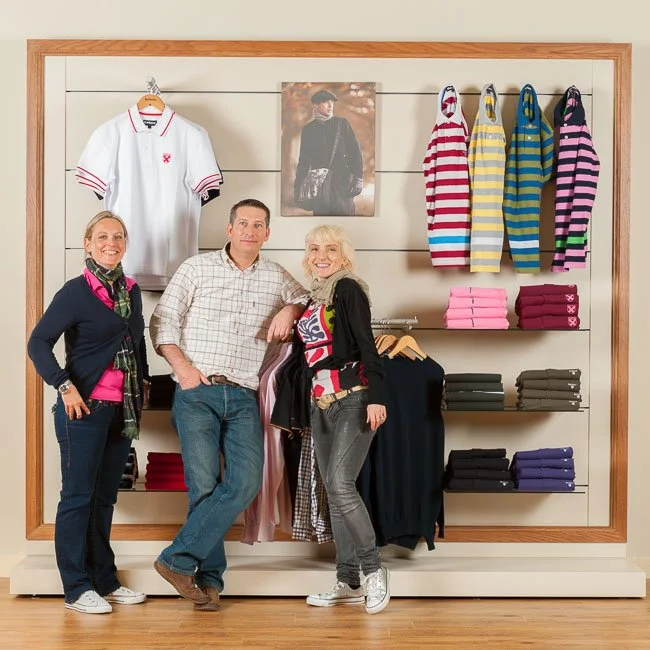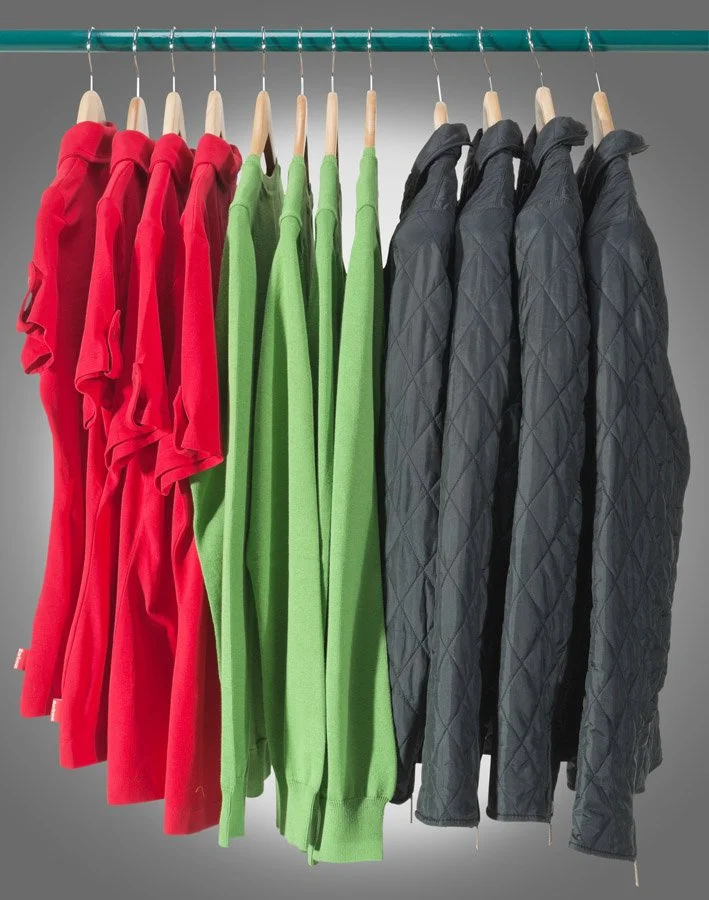Visual Merchandising
In my days shooting fashion products, part of the process was getting involved in photographing the final product. Fashion has another side which is just as important as the creation of styles, & the realisation of a finished product – selling the gear. Visual merchandising is an art in itself, and the VM stylists can be counted as artists working in a highly commercial environment. Until you’ve tried to set up a shop yourself, you’ll have no idea about the challenges facing the people who toil in shop windows at the start of every new season. At the Barbour head office premises, a whole floor of the old warehouse has been converted into huge showrooms for the sole purpose of displaying the entire range of products to the hundreds of worldwide buyers who visit throughout the year to sample the stuff first hand. On product launch dates, the whole building is packed with representatives from retail stores from all over the globe looking for new ideas from the brand. The entire place is buzzing for months beforehand – designers, shopfitters, stylists, painters, electricians, & cleaners all have a part to play in the build up to the final launch dates – usually in May and November. Once the final touches had been made to all the showrooms, I could get in there (usually in the dead of night) and document the entire range in its display environment. No mean feat.
Part of the old Barbour VM team after a week of 20 hour days. Notice the thousand yard stare.
The showrooms were shot overnight with my trusty D800 and 24mm PC-E lens. I needed to shoot 3 frames and use the shift function to create a wide panorama of the whole area without any distortion. I couldn’t use any flash, due to time constraints, so relied upon the huge dynamic range of the raw files produced by the sensor to pull out shadow detail, and bring down any overly-bright highlights caused by the powerful spots. Balancing colour was a complete nightmare due to the different light sources, coloured floor & walls, and the myriad of green shades on the racks. Some clever, but not overdone post production created something acceptable for the brief, which was simply to document the entire space for archival purposes. If I’d had the time, I would have used my multi-flash technique on the clothing.
The other type of VM photography commonly shot was the imagery used for the company VM standards manual. This was a book designed to guide the retail staff on how to set up the various freestanding units, shelves, and frames so that the whole network of stores looked consistent, and in-line with the corporate standards. My role in the process was quite simple, and the main bulk of the work was done by Paula Carney, the freelance VM stylist. She can count major brands among her clients – the likes of Selfridges, Argos, Harrods etc. A genius with visual displays.
Some of these shoots were relatively easy, but occasionally we would be restricted to a tiny dark room without any electricity. This presented challenges. I would be faced with shooting a full wall of display from a few feet away. The shot below shows an industrial type structure. Once it had been styled, I positioned the camera as far away as I could, set up two large softboxes to either side, just out of sight, and bounced a third flash from the extremely low ceiling. I had no choice but to use a wide angle lens being this close. This following image was shot with Nikon 24-70mm pro glass at the wide end at f11. Lightroom eliminates any barrel distortion from the shots, but you can still see the pronounced perspective in the frame by looking at the position of the back of the structure compared to the front. Usually, I would shoot using 70-85mm, like a portrait to make everything look as natural as you’d see it in the shop. Needs must.
That aspect of my working life is all gone now – things change, and we freelancers need to change with the times. Most fashion houses are now taking their production in-house, and we may see the demise of many of the smaller operators in the world of packshot fashion. There are scraps of work to be had in London and the South East, but it’s very unlikely that I’ll see the like of this type of contract in my working life again. Anyway, must crack on – need to shoot a one bedroom flat in Wallsend where someone allowed their dog to rot through the floorboards after it died. The glamour!





